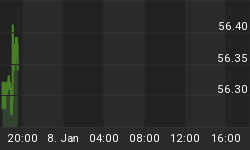Slowly but surely, cash is moving away from banks as depositors increasingly shift funds to products that pay higher yields.
That much has become abundantly clear during the current earnings season whereby the big banks have reported an acceleration in deposit outflows especially from wealthy individuals as interest rates continue rising across the board. Main Street depositors have started following suit as well after the Fed hiked short-term rates for the 7th time in less than three years.
The trend is especially prominent in the country’s largest banks including JPMorgan Chase & Co, Wells Fargo & Co and Bank of America Corp, where wealthy customers have reduced deposits by 4-12 percent.
Citigroup Inc. recorded a three-percent decline in customer deposits during the period. Bank of America, however, recorded just the opposite with average balances rising to $7,500 from $7,000. Interestingly, BofA pays some of the lowest rates on both checking and savings accounts.
From a banker’s perspective, the ongoing trend is cause for worry because customer funds are some of the cheapest and most reliable sources of profits. That’s because the interest spread between what they pay for deposits and what they generate from loans remains wide.
For instance, JP Morgan paid 0.51 percent for interest-bearing deposits during the second quarter after doubling it from 0.25 percent a year earlier. Still, that was way higher than the 4.99 percent generated from loans.
The huge spreads can be chalked up to stinginess by banks that have hardly passed even one-third of the 1.75-percent increase in interest rates by the Fed during the current cycle to customers in the form of higher rates for their deposits. Related: Institutional Investors Hold A Lot More Crypto Than You Think
From a customer’s perspective, a high interest rate environment is great because it helps them negotiate higher rates for their deposits with banks.
Keeping Plenty of Dry Powder
There’s safety in numbers. Until a stampede starts.
With many other instruments yielding much higher than cash in the bank, it’s only natural for investors to allocate more of their portfolios to higher-yielding products. For instance, the 10-year Treasury is currently yielding 2.88 percent, way higher than the 0.04 percent average that U.S. banks are paying on checking account deposits; 0.06 percent on savings accounts and 0.08 percent for money market funds.
Meanwhile, the S&P 500 has returned 4.8 percent in the year-to-date, with total returns of 6.4 percent when you factor in the 1.8 percent average dividend yield.
The hunt for higher yields is a key reason why high-yielding leveraged loan and junk bond markets have soared to record levels in 2018.
For the average investor, however, it’s important to avoid putting all your cash in high-yield instruments. Many high-yield investments tend to be pretty illiquid—leveraged loans are the worst offenders here with median settlement times of T+11 for on-par trades. What this means is that on average you receive your money after selling your leveraged loan instruments a full 11 business days after selling.
It’s therefore strongly advisable to maintain what is known in investment parlance as sufficient “dry powder” in the form of cash reserves in a FDIC-insured checking or savings accounts, as well as liquid assets such as money market funds.
Related: U.S. Treasury Yields Could Be About To Break Out
The cash acts as an emergency fund, comes in handy during huge market meltdowns and also helps you to quickly take advantage of opportunities that arise in the market by buying or adding to your favorite stocks during dips.
So how much cash and liquid assets should you maintain in your portfolio? Financial gurus recommend at least six months’ worth of expenses.
Understandably, the wealthy tend to have plenty of cash sloshing in their bank accounts with about 40 percent holding 10-24 percent of their portfolios in cash; 14 percent hold 25-50 percent and 8 percent hold 50 percent or more of their portfolios in cash. A full 38 percent, however, hold less than 10 percent of their portfolios in cash
By Alex Kimani for Safehaven.com
More Top Reads From Safehaven.com:

















